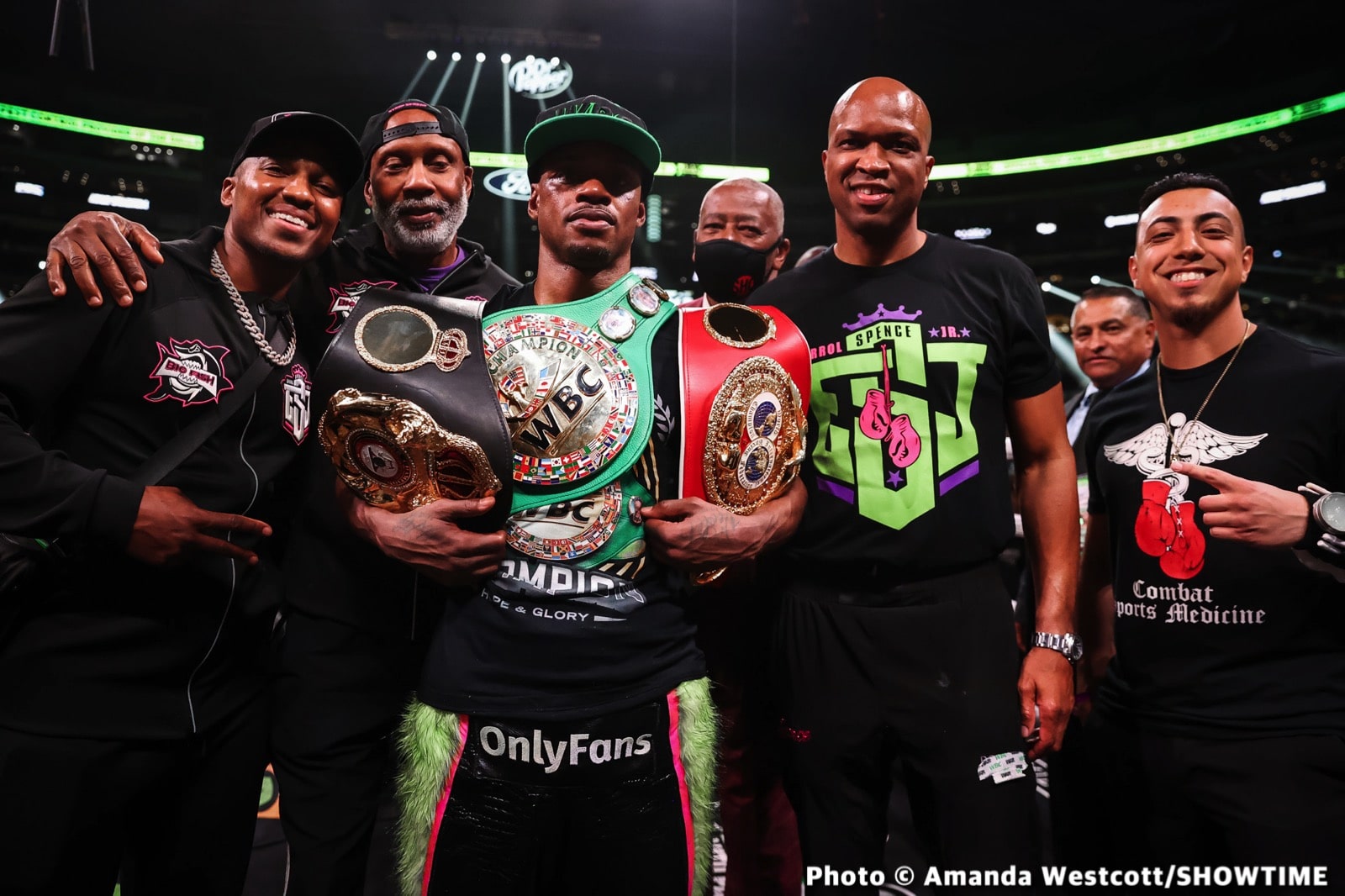Talks are underway for IBF/WBA/WBC welterweight champion Errol Spence Jr to fight Eimantas Stanionis next. Spence (28-0, 22 KOs) wants to return to the ring this year after Terence Crawford signed a deal to defend against David Avanesyan on December 10th.
Promoter Richard Schaefer told mike Coppinger that talks are underway for Spence to face Stanionis.
While that may not be a great fight on paper, it’s one that has a better chance of being negotiated quickly than if Spence were to try and put a fight together for December against Keith ‘One Time’ Thurman.
It’s still too early to know if the Spence vs. Stanionis fight will happen, however, because earlier today, Errol spoke about potentially moving up to 154.
Spence can always wait on Crawford, but after the way the Nebraska native bailed on him, it might not be a wise idea for Errol to invest any more time in him.
If Crawford bailed once, he could do it again, leaving Spence with nothing to show for waiting many months for their fight to get made.
“He was open to … working out a deal to step aside for the [Spence-Crawford] fight to happen, but now … he intends to enforce his official mandatory position for the WBA title.”
“The Spence-Crawford fight is different. I was just talking to some of the media about it. This is a classic situation, in my opinion, of fighters not understanding the money that is in the pot for a fight,” said Eddie Hearn to BetOnline_ag.
Richard Schaefer tells ESPN there are ongoing talks to pit Errol Spence vs. Eimantas Stanionis.
"He was open to … working out a deal to step aside for the [Spence-Crawford] fight to happen, but now … he intends to enforce his official mandatory position for the WBA title."
— Mike Coppinger (@MikeCoppinger) October 21, 2022
“Fighters deserve as much money as possible, but most are grossly overpaid in comparison to their real commercial value. Good luck to them because it’s a tough sport.
“When there’s a certain amount of money in the pot, there’s a certain amount of money in the pot. As a promoter, you can’t just come up with figures for purses unless you want to hemorrhage four, five, ten million, whatever it is, for a fight.
“That’s no way to run a business. But if you have two guys in that situation, might go, ‘I want 15, 20 million for the fight,’ and Errol Spence says, ‘I want 20 million for the fight.’ Then you look at the numbers, and they don’t work out for everybody.
“Then the flipside of that is you have a lunatic that comes in and wants to give him 10 million to fight David Avanesyan. If you’re Terence Crawford, ‘Why not?’ He wants a legacy, but he gets an easy fight for 10 million. It’s good business for him.
“Who that doesn’t work for is the fight fan who loses out on a fight that should be made very easy. Here, Terence Crawford is a free agent. He has no broadcast deal. So really, it’s poor form that fight didn’t get made, and it’s a big fight. Actually, it’s gotten bigger and bigger and bigger.
“It’s a lot bigger than when we were talking about it a year ago. One of the media said to me, ‘Well, shouldn’t fighters take a little bit less for legacy?’ I was like, ‘Yes, but this is not the world we live in.’ Unfortunately, some fighters have their number and their perceived value. That’s very different from the actual commercial value.
“The reality is, Terence Crawford has never delivered a pay-per-view above 100,000 buys. When he did the Amir Khan fight, I don’t even believe it was 100,000. Top Rank hemorrhaged millions and millions and millions in that fight.
“You can’t keep doing that. Whoever is doing Crawford vs. Avaneysan is going to hemorrhage millions and millions and millions of dollars. We’re running businesses. I don’t even want to lose a cent, let alone millions and millions and millions of dollars.
“We do it because that’s the business we’re in. As a promoter running a business, you can’t say, ‘The fight fans want this fight, the boxing world needs this fight, so we’ll overpay everybody and lose ten million bucks on this fight.
“There needs to be an understanding of the value in fights. Another good example is Devin Haney against George Kambosos. How do those numbers work? Terrible rating on ESPN, really poor pay-per-view numbers in Australia, and the gate were awful because no one really wanted to see it.
“By the way, that’s no criticism of both fighters. They’re great fighters. No one wanted to see the rematch anyway. So who fronts the bill? The fighters don’t front the bill. It’s not their problem. Someone has got to,” said Hearn.

